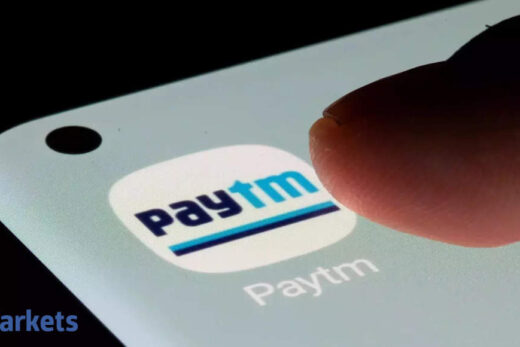The quarter gone by has been a challenging one for the FMCG sector largely because of input and cost pressures. What has been your experience at Tata Consumer because we are going through a patch of inflation which we have never seen before?
Before I get to this specific question, I just want to highlight that Tata Consumer as a company has declared results for six quarters and it has been six quarters of double digit growth. It has been a decent growth for us even this quarter. Net of divestments topline is up 11%, bottomline up 5%; efficiently delivered about 16 days taken off working capital, 1,700 bps improvement in free cash flow to EBITDA.
The strategic priorities which we had defined are well in play — whether it is outlet expansion beyond a million outlets, A&P up by 75% strengthening brands, innovation now picking up 2.5%, ecomm clocking 39% growth. Sampann business is up by close to 30%, Soulfull outlets, NourishCo which is our ready to drink business is up year to date by 100% plus and most importantly, market share gains — whether it is in tea — about 168-170 bps and salt up about 400 bps. Coming back to your question for Tata Consumer per se, we see two different facets of inflation and this is because there is a different picture happening for us in beverages and there is a different picture happening for us in foods.
In beverages, we are seeing an easing off of inflation because the primary driver out there was the jump in tea prices last year which peaked about September of 2020 and after that it had started tapering down and now it has almost range bound for a couple of months. That is why there is an uptick in the India beverages margins and despite the fact that we have spent extra behind brand building, we have roughly increased our A&P spends by about 3.5 times versus the same quarter last year. We have still delivered good margins.
We expect that to continue to be improving from here on. On the food business on the other hand, there is a reverse picture. The primary business being salt, freight is an important component. Apart from that, energy is an important component in converting salt itself and there we use coal, etc, those prices are jumping up. We are seeing inflation coming up very quickly and very steeply. Going forward, we have got to figure that out and we are in the process of working out various options. There are pack sizes, pricing, A&P, discretionary spends but in the foods business, we will have to balance topline margin and cost.
How do you see the dynamics changing now? India business is broadly 50%. Then there are two big international businesses which are up by 25% each. How do you see the dynamics changing?
Tata Consumer was created to fulfil the FMCG place of the group and we said we will first become a large F&B player and then become a larger FMCG. We are already a decently strong beverage player. We are among the top two players in tea. We are now starting to make a play in coffee. We have just got to keep it going. The ready to drink businesses is the other leg that we are building. But the big boss is India’s packaged beverages. Food is a huge canvas that one can play with. We have very clearly looked at where we should be going in portfolio terms, looked at four distinct platforms and expansion out there. So yes international business is a steady business with decent profitability and the bottomline margin is up to 14% now which is a recent historic high. So with very steady cash flows, decent positions, India beverages business is growing from strength to strength. But the big jump will be in the food business as we go forward.
But for tea business can I safely say that the margin challenge is over because this was one business where the impact of high tea prices had kicked in a couple of quarters ago?
One should see margins going up from here on for the India beverages business because last year when the tea costs started going up, we were slightly behind the curve on taking pricing up but over a six-month period, we normalised. Now when tea prices are coming down, the margins are still not where I think they should be. Yes there might be a slight bit of a downward pressure in tea costs and if that is so, then we will have to look at pricing. But broadly, I would say, margins in India packaged beverages would be improving from here.
How are you planning to differentiate in the food business because that is a business which in a sense there is hyper competition from local and organised players. Also, it is a business where the dependence on commodity prices is extremely high.
I would say we have got a very solid salt business where all the different brands put together, we are close to 38% share and with very decent margins. Almost best in the class in the food business. On the other hand, we still have a long way to go in building decent positions. As we build those positions, we have got to watch out for two-three critical pieces — enter categories with scale and make sure that the products have got decent gross margins built in because if you got to build either a category play or if you got to build share, then you must have enough fire power in terms of margins which can afford good branding and advertisement spends.
So, that is where we will go and I will give you an example of where we have executed that and this is the inorganic piece — Soulfull. We saw an opportunity to enter a space where we were not present and we went and acquired Soulfull. It has very healthy gross margins. It is a differentiated play and therefore we think we can build strong businesses. But if you enter a commodity without a differentiation, you will not have margins and therefore one will struggle to play there. So even the near commodity plays that we have like pulses, we only play in unpolished dals. If I were to go for scale, I would go with polished. But if I go with polished, I will have no margins and that is why we stayed away from that.
Has the international business stabilised, especially the Tetley business?
Absolutely. The international business took it on the chin in quarter one this year because last year they had this huge advantage of pantry loading. The pantry loading phenomenon was much more in the developed markets than in India and they went through this hike. Q1 saw the hike. Q2 saw a bit of tapering off and Q3 onwards, there was normalisation. We saw a huge hit on the overall top line of the international business last quarter — Q1. Q2 was relatively flat. While the reported numbers are negative 6%, overall the international business is plus 0.4% and the reason is because last year, we divested two businesses – the food service business in the US and the out of home coffee business in Australia.
So, broadly it has come on to a par and while it has come on par, the bottomline has improved; EBIT margin is up to 14% which is recent historic high. We feel very good about where we are in the international business and the other thing we feel good about is this year we have brought in all the brands together and started executing what we call the three brand strategy.
For example, in the UK we have got Tetley, we have got Good Earth and we have got Teapigs and the reason we are going with a high focus behind Good Earth and Teapigs is because we need to move our portfolio from just being black tea into a larger tea play. The growth is happening in speciality and premium and that is where Teapigs and Good Earth comes in.
A lot of Tata Companies are going through a serious policy change in terms of capital allocation. Tata Chemicals is looking to sell one of their big acquisitions of soda ash in the US. Are you looking at selling and exiting some of your businesses?
Geographic and product portfolio is a screen which you check through from time to time. Right now, we have got a strong international business. There were pieces of the international business which did not fit in like the coffee business. Out of home coffee business in Australia, the food service business in the US we have divested already and also we have defined the three core markets where we are going to play in — the UK, Canada, US. Right now, we have decent top line growth from an international perspective, though it cannot be compared to India and a steady cash flow generator.
So for now we are in the international business, in fact if anything we are looking to cost optimise to make sure that we have got more fire power to spend in the international business.
What is the status Of Tata Coffee? Is it still a work in progress? Have you decided whether Tata Coffee will remain listed or be merged?
My answer remains the same, work in progress.
You said you have got cash of about Rs 2,700 crore. How would you be able to achieve your targets of return ratios because cash on the balance sheet will be a drag? So either the cash has to be given back or you will have to acquire something?
You are absolutely right, the intention is to generate better cash and like I said, this quarter we have improved working capital by 16 days versus last year from 57 to 41 and every other lever in the balance sheet, in the cash cycle is being looked at. Free cash flow to EBITDA was 65% for the quarter last year. This year it is 82%. So we are focussed on generating cash. The reason for generating that cash is not to sit with the cash. Last year, we did increase a bit of dividend but going forward, we are looking at aggressive growth both organic as well as inorganic.
The only thing is inorganic growth comes with a rider. It has to pass muster both on the strategic framework as well as the financial filters only then we will move in. At any point of time, we are always evaluating four to five opportunities. The only problem is what we like is not available or does not want to play and what is there to play we do not like the metrics. But acquisition is a work in process. One just does not decide to do it every three months. There has to be a right fit and we are on the lookout.
You are of the view that the margin pressures are not that acute, am I right?
I would not say. The beverage business margins are going to improve. In the foods business, we see pressure and are trying to figure out ways to mitigate that pressure.
How much of your business is at a transformational stage and how much of your portfolio will only benefit because of the cyclicality?
I would say broadly the consumer products businesses are added into my top line, mostly packaged beverages, foods etc. We have got to continue to grow from here, especially the foods portfolio. The ones which will get the advantage of Covid being behind us and business as usual coming back very quickly would be the two out-of-home businesses that we have and both are in India — the Starbucks joint venture as well as the Nourishco business. In Starbucks, we are already seeing the uptick and in September this year versus September of 2019, the same store sales was about 94%. So, business is coming back to normalcy. Nourishco is coming back but we also got geographic and portfolio opportunities, year to date up by 107%. These are the two businesses that will really take off with the Covid being behind us
.
Will your path to reaching double digit return ratios get challenged?
I would say we are slightly behind on the return ratio front but the essential piece is we have to make sure that we get growth into the business. We have delivered six quarters of growth so that is the one primary factor. Second factor is efficient deployment of the cash that we have to make sure we are creating opportunities and that is work in process.
Overall, we did have some ups and downs. Right now, we are seeing a bit of pressure on the food business but overall, I would say slightly behind, not significantly behind on improving the return ratios. Over a period of time we are extremely aware that the return on capital employed or return on equity for Tata Consumer lags its peers and we are aiming to keep it on an upward cycle to make sure we are catching up.
How do you intend to create big brands like your peers have?
So two, three things; for the portfolio that we have, I think we have got the brands that we need. Number two, in some of the businesses like in package beverages, our brand architecture is a little bit scattered and there is work in process to look at that and streamline it, that is one piece.
I think the second important piece is making sure that the distribution engine works but along with that, provide air cover. That is where we have been behind the rest of the industry. The A&P percentage of every other company is in the high single digits, low double digits on total advertising and sales promotion expenses. We are slightly behind and we are making conscious efforts to ramp it up. Our overall A&P spend is up by 50% versus last year. India business specifically is up by 75% this year. So we have to build firepower for the brands, build stronger brands and then you will create that strength in the market either to expand the brand or command pricing power.
The Tatas are also looking at creating a very large digital and a distribution platform; they have acquired Big Basket; they have acquired businesses in the pharmacy space. How will this change life for Tata Consumer because distribution is a very large cost for FMCG players?
So effectively whatever initiatives you are talking about are happening under Tata Sons and Tata Digital and the whole umbrella that they are creating there of the digital businesses. Since it is part of the same group. it helps us to work closely to figure out synergies, synergies in procurements, synergies in logistics, synergies in addressing consumers. We will work very closely with these companies to make sure that we are creating win-win situations for both of us.
If life back to normal for Tata Consumer employees?
Our offices have been open for some time and we have been constantly raising the percentage of employees whom we are allowing into the office. The actual number is lower than the ceiling that we have put in. I am in the office about three, sometimes four days a week. We have started travelling. In fact, next week I am in the Bangalore office.
So yes, from that perspective, life is coming back but we are going at a very measured pace because we want to make sure that while we open up and get employees back to office and start travelling, we don’t want to put anyone at risk. Employee safety and employee comfort most importantly is right up front and centre. Right now, we are in a hybrid model and we will take measured steps to get back to a fully normal situation.



